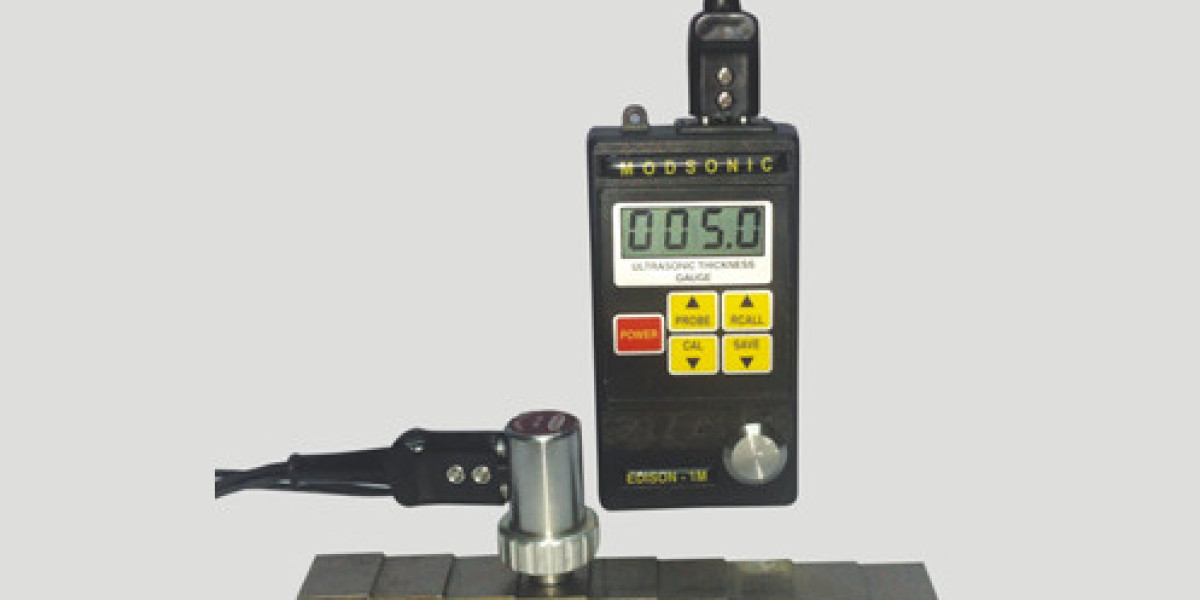In today’s fast-paced manufacturing environment, maintaining product quality while optimizing operational efficiency is more important than ever. UTM (Universal Testing Machine) thickness measurement offers manufacturers a reliable method to ensure that materials meet strict quality standards while reducing production costs and enhancing workflow efficiency.
In this blog, we’ll discuss how UTM thickness measurement can improve manufacturing efficiency, from precise material testing to streamlining production processes and ensuring better product consistency.
What is UTM Thickness Measurement?
UTM thickness measurement refers to the use of a Universal Testing Machine to measure the thickness of various materials such as metals, plastics, coatings, and composites. A UTM applies controlled force to a material and measures the resulting deformation, providing detailed and accurate data about the material’s thickness and overall quality. This type of measurement is crucial in industries where material integrity is key to product safety, performance, and longevity.
How UTM Thickness Measurement Contributes to Manufacturing Efficiency
1. Streamlining the Production Process
Manufacturers face constant pressure to maintain product quality while reducing time and costs. UTM thickness measurement helps streamline the production process by ensuring that materials are within tolerance from the start. By testing the thickness of raw materials or finished products at various stages, manufacturers can identify inconsistencies early and take corrective action. This allows for faster production without sacrificing quality, minimizing downtime, and ensuring that parts meet required specifications.
For instance, if a material is found to be too thin, it can be reworked or replaced before moving further down the production line, preventing defects and delays later in the process.
2. Improving Product Consistency and Quality
Consistent material thickness is essential for producing high-quality, reliable products. UTM thickness measurement ensures that each product meets the necessary thickness specifications, which is crucial for products that require precise material properties for safety or performance.
For example, in industries such as automotive manufacturing, where the safety of components such as body panels or engine parts depends on consistent material thickness, UTM thickness measurement helps ensure that each part meets exacting standards. This reduces the need for rework or scrapping, improving overall manufacturing efficiency.
3. Enhancing Material Optimization
One of the most significant benefits of UTM thickness measurement is its ability to optimize the use of raw materials. In industries where materials can be expensive or limited, ensuring that the correct thickness is used in each part can significantly reduce material waste. UTM thickness measurement allows manufacturers to verify the exact thickness of materials before and after production, helping them use only the required amount of material and avoid overuse.
This material optimization not only saves costs but also contributes to sustainability by minimizing waste, making it an important factor in green manufacturing initiatives.
4. Real-Time Monitoring for Continuous Improvement
Another way UTM thickness measurement improves manufacturing efficiency is by enabling real-time monitoring of material thickness throughout the production process. Continuous monitoring allows manufacturers to identify any deviations or inconsistencies immediately and address them before they become larger problems. This real-time data can be integrated with other monitoring systems, allowing for more effective process control and adjustments on the fly.
For instance, if a machine is not applying the correct pressure during a metal forming process, real-time data from UTM thickness measurement can alert operators to the issue before it results in faulty products or defects.
5. Reducing Rework and Scrap Rates
By implementing UTM thickness measurement into the quality control process, manufacturers can significantly reduce the need for rework and scrap. By catching thickness variations early, manufacturers can prevent defective parts from moving down the line and ensure that products meet the desired specifications on the first pass. This leads to fewer parts needing to be discarded or reworked, improving both efficiency and profitability.
6. Supporting Compliance with Industry Standards
In many industries, such as aerospace, automotive, and electronics, materials must meet strict regulatory and safety standards. UTM thickness measurement provides manufacturers with a reliable method to confirm that their products are in compliance with industry regulations. Regular thickness checks help ensure that parts adhere to safety standards and other regulatory requirements, reducing the risk of legal issues and product recalls.
In industries like aerospace, where material integrity can directly impact safety, using UTM thickness measurement is essential for compliance with regulatory bodies such as the Federal Aviation Administration (FAA) or the European Union Aviation Safety Agency (EASA).
Conclusion
UTM thickness measurement is a critical tool in improving manufacturing efficiency. By providing accurate and consistent data on material thickness, manufacturers can optimize processes, reduce waste, and ensure that products meet safety and performance standards. The ability to streamline production, enhance quality control, and monitor material thickness in real-time makes UTM thickness measurement an essential part of modern manufacturing practices.
As industries continue to demand higher quality, lower costs, and faster production times, UTM thickness measurement provides manufacturers with the tools they need to stay competitive, compliant, and efficient. Embracing this technology helps companies achieve better material optimization, fewer defects, and improved overall productivity.


